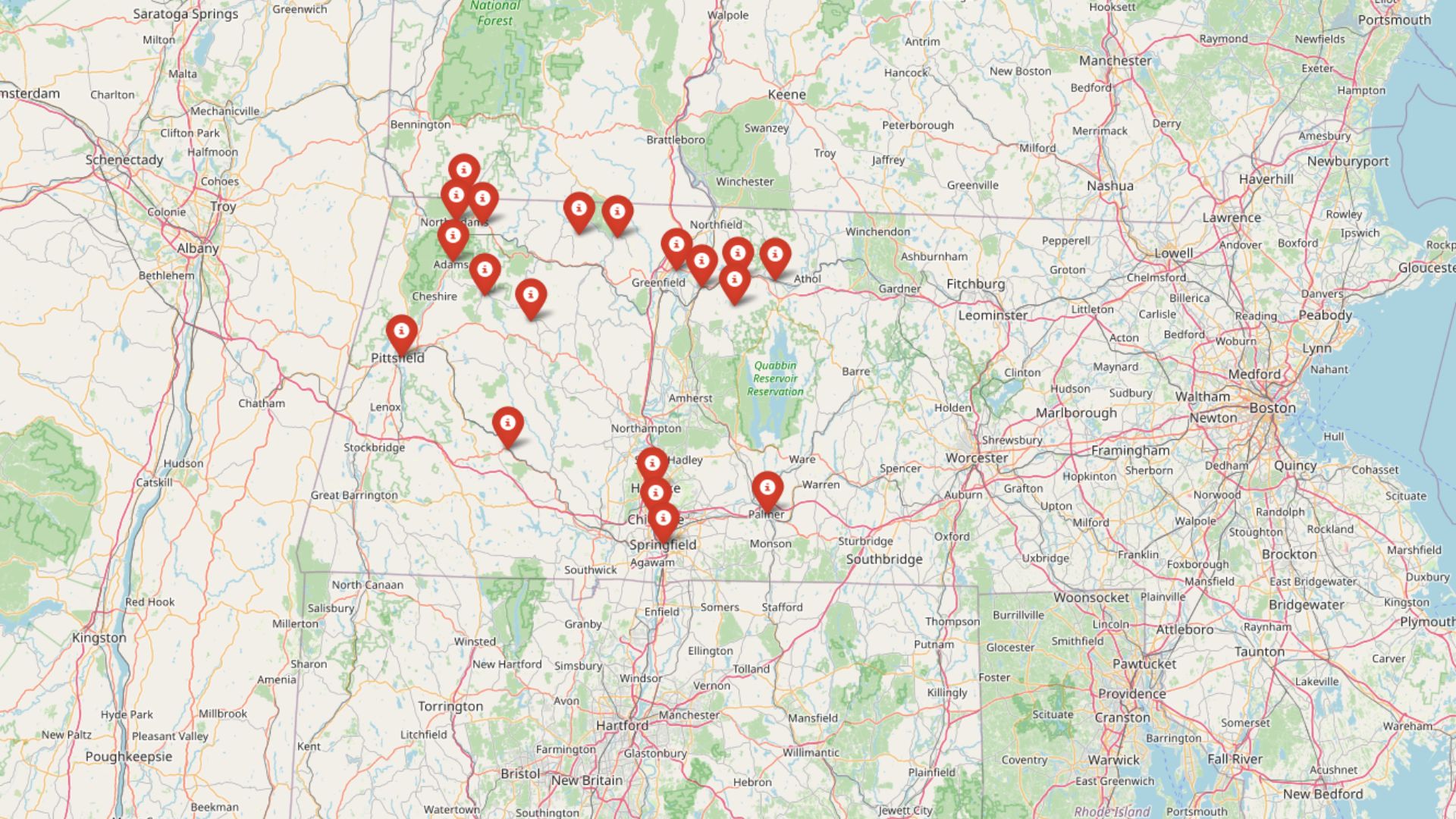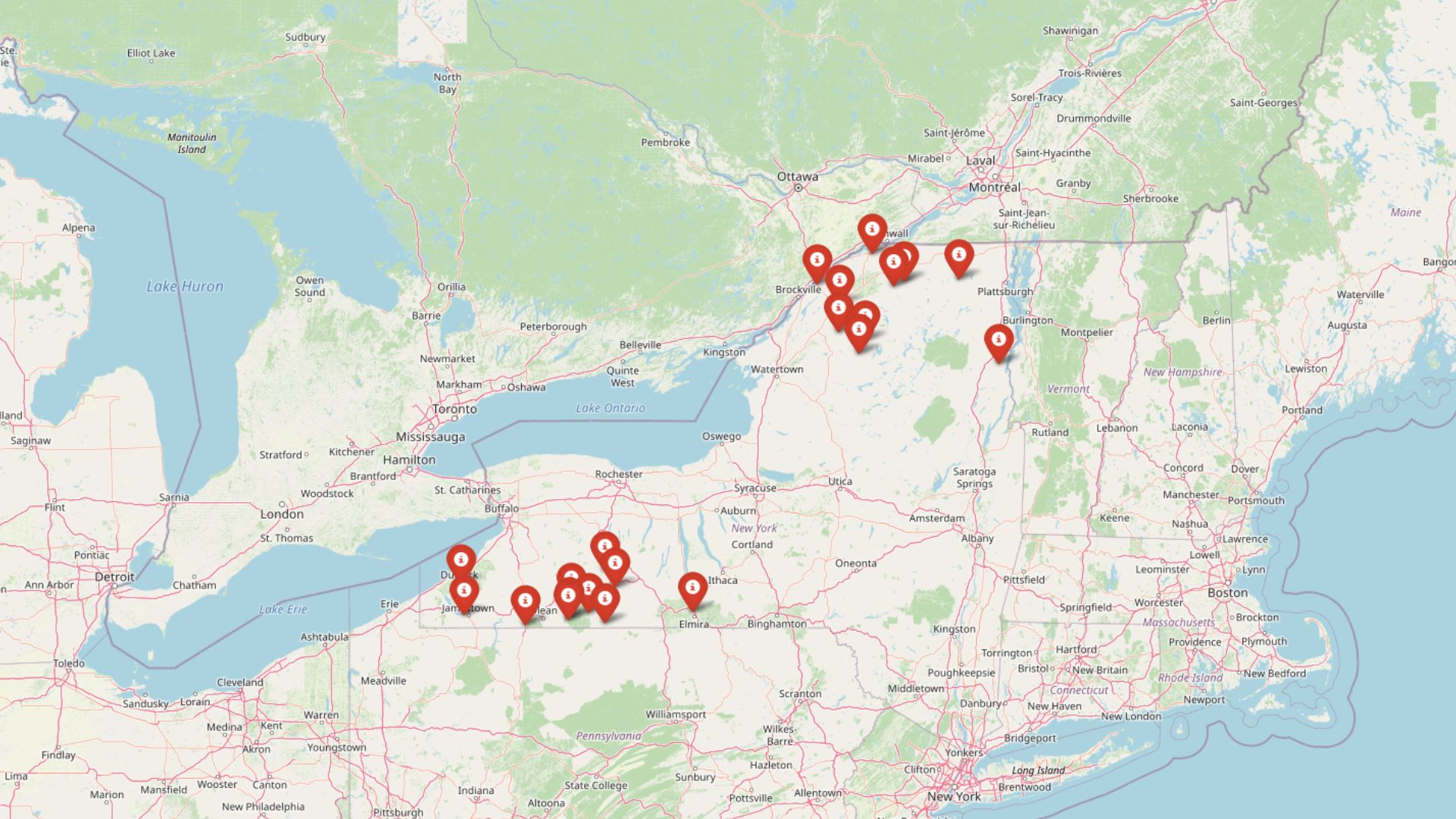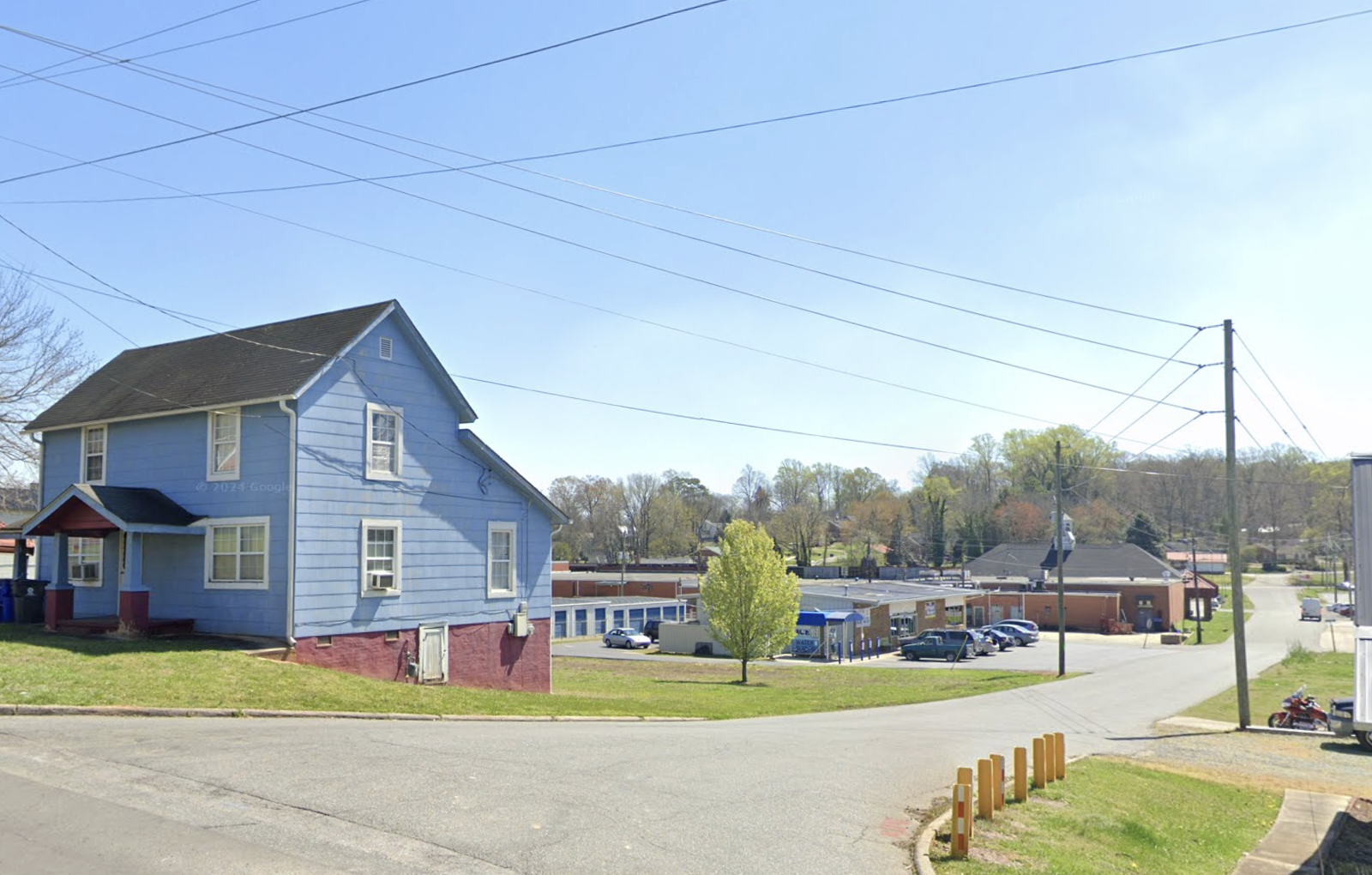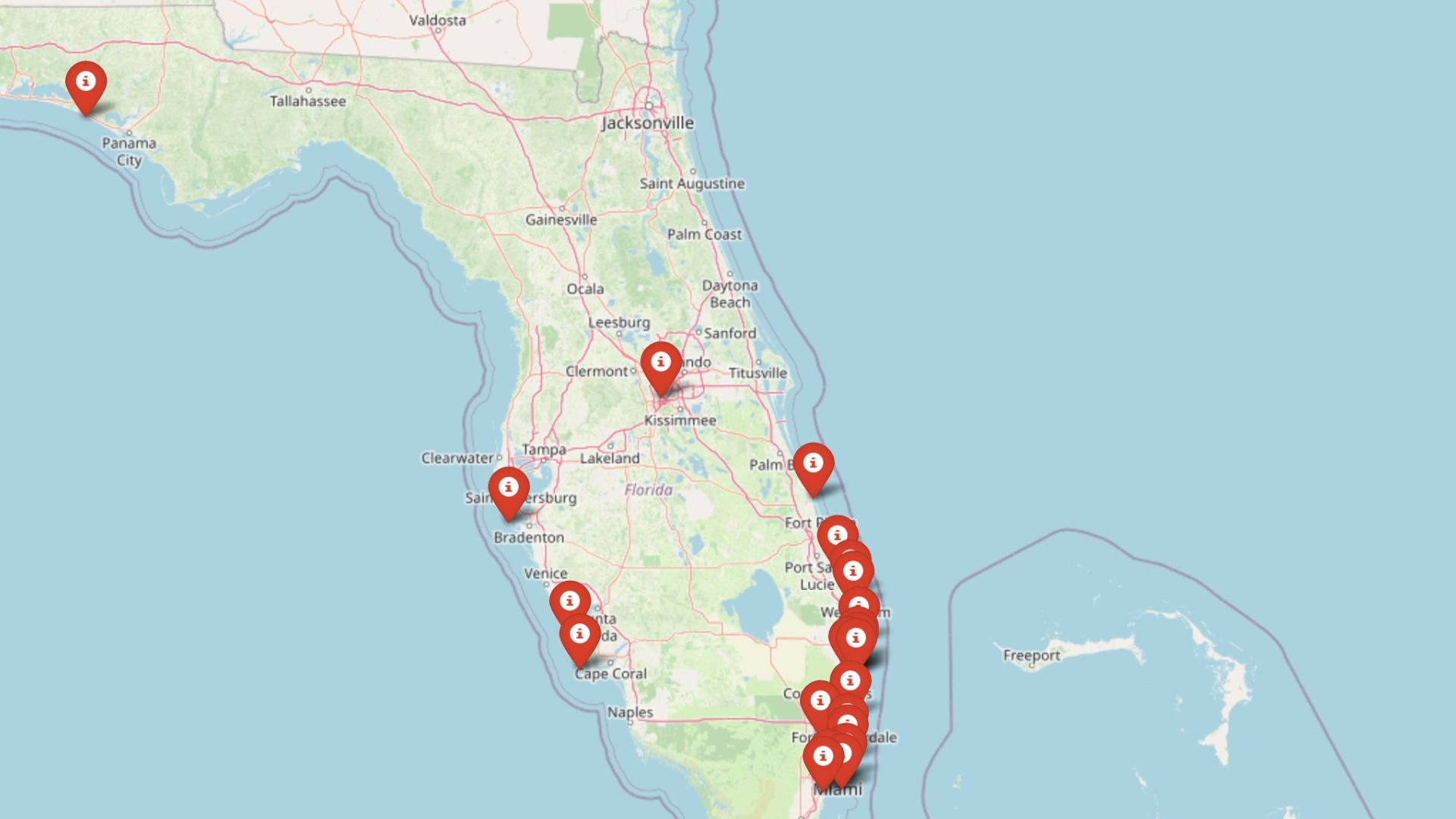
I’ve been digging into North Carolina’s premium real estate market using the Zillow Home Value Index, and what I’ve discovered about wealth distribution across the state’s top neighborhoods is fascinating.
The financial stratification between Charlotte’s luxury enclaves and emerging hotspots in Cary and Chapel Hill reveals a shifting landscape where some areas have seen their values more than double since 2010, while maintaining their exclusivity through consistent appreciation even during market fluctuations.
What’s particularly striking is how Wake County has emerged as a powerhouse with six neighborhoods in the top 25 most valuable areas, challenging Charlotte’s traditional dominance and reflecting the Research Triangle’s economic momentum.
25. Providence Park

- 2025 Home Value: $1,059,159
- 2020 Home Value: $690,725
- 2015 Home Value: $488,077
- 2010 Home Value: $416,526
- % Change (2010–2025): 154.3%
- % Change (2015–2025): 117.0%
- % Change (2020–2025): 53.3%
Providence Park exemplifies how strategic location can drive exceptional investment performance, with its 154.3% appreciation since 2010 outperforming many higher-priced neighborhoods. Its acceleration to the million-dollar threshold in 2025 coincides with Charlotte’s broader economic expansion, making it one of Mecklenburg County’s most financially rewarding residential zones. Situated in south Charlotte near upscale retail and dining options, this neighborhood combines accessibility with exclusivity.
24. Greenwood

- 2025 Home Value: $1,071,705
- 2020 Home Value: $636,500
- 2015 Home Value: $544,599
- 2010 Home Value: $595,224
- % Change (2010–2025): 80.1%
- % Change (2015–2025): 96.8%
- % Change (2020–2025): 68.4%
Greenwood’s financial trajectory tells a fascinating recovery story, having actually decreased in value between 2010-2015 before staging a remarkable comeback with nearly 97% growth over the subsequent decade. The aggressive 68.4% appreciation since 2020 demonstrates its renewed market strength as Chapel Hill’s academic prestige drives demand. Nestled among mature trees just minutes from UNC’s campus, Greenwood combines scholarly atmosphere with upscale residential character.
23. Toscana

- 2025 Home Value: $1,091,918
- 2020 Home Value: N/A
- 2015 Home Value: N/A
- 2010 Home Value: N/A
- % Change (2010–2025): N/A
- % Change (2015–2025): N/A
- % Change (2020–2025): N/A
Toscana represents one of Wake County’s newest luxury developments, with its impressive $1.09 million valuation in 2025 establishing it immediately among North Carolina’s elite neighborhoods without historical comparison data. The absence of previous metrics suggests rapid appreciation from initial development to premium status, highlighting Cary’s growing appeal to high-net-worth homebuyers. This Mediterranean-inspired community in western Cary offers resort-style amenities amid the Triangle’s tech-driven prosperity.
22. Wessex

- 2025 Home Value: $1,123,463
- 2020 Home Value: $672,737
- 2015 Home Value: $594,815
- 2010 Home Value: $586,093
- % Change (2010–2025): 91.7%
- % Change (2015–2025): 88.9%
- % Change (2020–2025): 67.0%
Wessex demonstrates remarkable financial resilience, weathering the 2010-2015 real estate stagnation with minimal value change before accelerating to 88.9% growth over the following decade. The striking 67% appreciation since 2020 indicates sustained momentum that has propelled it well past the million-dollar threshold by 2025. Located in Cary’s prestigious western corridor, Wessex pairs executive-style homes with proximity to Research Triangle Park’s economic engine.
21. Landfall

- 2025 Home Value: $1,127,558
- 2020 Home Value: $645,409
- 2015 Home Value: $568,956
- 2010 Home Value: $599,635
- % Change (2010–2025): 88.0%
- % Change (2015–2025): 98.2%
- % Change (2020–2025): 74.7%
Landfall stands out as coastal North Carolina’s financial powerhouse, recovering from a post-recession dip to achieve an extraordinary 98.2% value increase since 2015, with momentum accelerating to 74.7% growth in just the last five years. Its breakthrough to $1.12 million average values reflects both limited coastline inventory and increasing demand from affluent remote workers. This gated waterfront community in Wilmington combines championship golf courses with Intracoastal Waterway access, creating North Carolina’s premier coastal luxury enclave.
20. Macgregor Downs

- 2025 Home Value: $1,129,511
- 2020 Home Value: $628,843
- 2015 Home Value: $496,394
- 2010 Home Value: $469,043
- % Change (2010–2025): 140.8%
- % Change (2015–2025): 127.5%
- % Change (2020–2025): 79.6%
Macgregor Downs emerges as one of North Carolina’s most impressive investment performers, with 140.8% appreciation since 2010 and an accelerating growth trajectory culminating in a remarkable 79.6% value increase in just the past five years. This financial performance has transformed what was once a mid-tier luxury neighborhood into a genuine million-dollar enclave by 2025. Centered around a Tom Fazio-designed golf course in Cary, Macgregor Downs combines established prestige with proximity to Research Triangle Park’s high-income employment centers.
19. Mountainbrook

- 2025 Home Value: $1,137,760
- 2020 Home Value: $668,633
- 2015 Home Value: $525,957
- 2010 Home Value: $484,471
- % Change (2010–2025): 134.8%
- % Change (2015–2025): 116.3%
- % Change (2020–2025): 70.2%
Mountainbrook’s financial transformation has been nothing short of remarkable, with home values increasing by 134.8% since 2010 and maintaining consistent growth momentum through each measured period. The 70.2% surge since 2020 represents nearly $470,000 in added value per home, substantially outpacing inflation and most alternative investments. Located in south Charlotte’s “wedge” area, Mountainbrook balances mature landscape with proximity to SouthPark’s commercial hub, appealing to professionals seeking established luxury.
18. Greenville Loop

- 2025 Home Value: $1,151,294
- 2020 Home Value: $598,039
- 2015 Home Value: $476,367
- 2010 Home Value: $502,154
- % Change (2010–2025): 129.3%
- % Change (2015–2025): 141.7%
- % Change (2020–2025): 92.5%
Greenville Loop stands as Wilmington’s financial juggernaut, recovering from post-recession decline to post staggering 141.7% growth since 2015 and leading the entire state with 92.5% appreciation since 2020—nearly doubling homeowner equity in just five years. This acceleration past the $1.15 million threshold represents coastal North Carolina’s increasing appeal to high-net-worth buyers. Situated in eastern Wilmington with easy access to Wrightsville Beach, Greenville Loop offers large estate lots with mature landscaping that command premium valuations.
17. Preston Village

- 2025 Home Value: $1,203,593
- 2020 Home Value: $676,829
- 2015 Home Value: $569,204
- 2010 Home Value: $523,652
- % Change (2010–2025): 129.8%
- % Change (2015–2025): 111.5%
- % Change (2020–2025): 77.8%
Preston Village exemplifies Wake County’s financial ascendance, with consistent appreciation totaling 129.8% since 2010 and a notable acceleration to 77.8% growth just since 2020, breaking through the $1.2 million threshold. This performance outpaces broader market trends while maintaining relatively low volatility compared to similar luxury enclaves. Nestled in Cary’s prestigious Preston development, this neighborhood offers golf course views and established luxury that continues attracting corporate executives relocating to the Triangle region.
16. Glenwood

- 2025 Home Value: $1,217,712
- 2020 Home Value: $765,810
- 2015 Home Value: $627,011
- 2010 Home Value: $578,809
- % Change (2010–2025): 110.4%
- % Change (2015–2025): 94.2%
- % Change (2020–2025): 59.0%
Glenwood represents Raleigh’s financial aristocracy, maintaining steady appreciation through all market cycles to achieve 110.4% growth since 2010 and a solid 59% increase since 2020. Its resilient performance has transformed average values from approximately $580,000 to over $1.2 million, creating substantial wealth for long-term homeowners. This historic district just northwest of downtown Raleigh features distinctive architecture from the early 20th century, offering architectural significance alongside proximity to the capital city’s government and cultural centers.
15. Franklin-Rosemary Historic District

- 2025 Home Value: $1,240,336
- 2020 Home Value: $734,604
- 2015 Home Value: $649,708
- 2010 Home Value: $674,412
- % Change (2010–2025): 83.9%
- % Change (2015–2025): 90.9%
- % Change (2020–2025): 68.8%
Franklin-Rosemary Historic District demonstrates the financial premium placed on architectural significance, weathering post-recession declines before staging a dramatic 90.9% appreciation since 2015 and breaking through the $1.24 million threshold by 2025. The accelerating 68.8% growth since 2020 indicates increasing scarcity value for historic properties in prime locations. Situated adjacent to the University of North Carolina campus in Chapel Hill, this neighborhood combines irreplaceable historic architecture with walkability to Franklin Street’s vibrant culture.
14. Chesley

- 2025 Home Value: $1,256,353
- 2020 Home Value: $777,670
- 2015 Home Value: $736,536
- 2010 Home Value: $821,748
- % Change (2010–2025): 52.9%
- % Change (2015–2025): 70.6%
- % Change (2020–2025): 61.6%
Chesley presents an intriguing financial anomaly, experiencing post-recession decline before staging a remarkable recovery that accelerated to 70.6% growth since 2015 and solid 61.6% appreciation just since 2020. Despite having the lowest overall growth rate among North Carolina’s luxury neighborhoods at 52.9% since 2010, its high starting point still positions it among the most valuable areas. Located in prestigious southwest Chapel Hill, Chesley offers estate-sized lots with mature landscaping that maintain their desirability among Orange County’s academic and professional elite.
13. Weycroft

- 2025 Home Value: $1,258,224
- 2020 Home Value: $735,902
- 2015 Home Value: $652,172
- 2010 Home Value: N/A
- % Change (2010–2025): N/A
- % Change (2015–2025): 92.9%
- % Change (2020–2025): 71.0%
Weycroft demonstrates the financial rewards of Wake County’s ascendance, with property values surging 92.9% since 2015 and maintaining momentum with 71% growth just since 2020, nearly doubling homeowner equity in a decade. This appreciation trajectory has transformed it from a mid-tier luxury enclave to a genuine million-dollar neighborhood breaking the $1.25 million threshold by 2025. Located in Cary’s prestigious western corridor, Weycroft offers newer construction with high-end finishes that cater to Triangle executives and tech industry professionals.
12. Macgregor West

- 2025 Home Value: $1,264,208
- 2020 Home Value: $743,738
- 2015 Home Value: $644,458
- 2010 Home Value: $621,497
- % Change (2010–2025): 103.4%
- % Change (2015–2025): 96.2%
- % Change (2020–2025): 70.0%
Macgregor West represents a financial success story within Cary’s luxury market, doubling in value with 103.4% appreciation since 2010 and maintaining consistent growth momentum through all measured periods. The impressive 70% surge since 2020 has created substantial wealth for homeowners while pushing values well above the $1.26 million mark by 2025. Situated adjacent to prestigious Macgregor Downs Golf Club, this neighborhood combines traditional architectural styles with proximity to Research Triangle Park’s employment centers.
11. Montibello

- 2025 Home Value: $1,265,770
- 2020 Home Value: $755,455
- 2015 Home Value: $597,887
- 2010 Home Value: $541,326
- % Change (2010–2025): 133.8%
- % Change (2015–2025): 111.7%
- % Change (2020–2025): 67.6%
Montibello showcases Charlotte’s financial resilience with home values increasing 133.8% since 2010 and maintaining strong performance through all market cycles, more than doubling valuations in a decade with 111.7% growth since 2015. The recent 67.6% surge since 2020 represents over $510,000 in added equity per home during a single five-year period. Located in south Charlotte’s prestigious “wedge” area, Montibello combines estate-sized lots with proximity to SouthPark’s commercial amenities and uptown’s employment centers.
10. Ridgefield Farms

- 2025 Home Value: $1,266,765
- 2020 Home Value: N/A
- 2015 Home Value: N/A
- 2010 Home Value: N/A
- % Change (2010–2025): N/A
- % Change (2015–2025): N/A
- % Change (2020–2025): N/A
Ridgefield Farms represents Wake County’s newest luxury contender, bursting onto the scene with values exceeding $1.26 million by 2025 without previous historical metrics for comparison. This sudden emergence among North Carolina’s elite neighborhoods demonstrates both Cary’s expanding luxury market and homebuyers’ willingness to invest substantially in new construction with premium features. Situated in western Cary with easy access to Research Triangle Park, Ridgefield Farms offers newer estate homes on generous lots that appeal to the region’s growing executive population.
9. Laurel Hill – Rocky Ridge

- 2025 Home Value: $1,282,466
- 2020 Home Value: $732,576
- 2015 Home Value: N/A
- 2010 Home Value: N/A
- % Change (2010–2025): N/A
- % Change (2015–2025): N/A
- % Change (2020–2025): 75.1%
Laurel Hill – Rocky Ridge demonstrates Chapel Hill’s financial momentum with a spectacular 75.1% value increase in just five years, representing over $549,000 in added equity per property since 2020 alone. This surge has propelled the neighborhood past the $1.28 million threshold and established it firmly among North Carolina’s elite residential areas. Located in southern Chapel Hill with rolling topography and mature hardwoods, this exclusive enclave offers large estate lots with custom-built homes catering to Orange County’s academic and professional elite.
8. Southbridge

- 2025 Home Value: $1,285,021
- 2020 Home Value: $733,389
- 2015 Home Value: $658,583
- 2010 Home Value: N/A
- % Change (2010–2025): N/A
- % Change (2015–2025): 95.1%
- % Change (2020–2025): 75.2%
Southbridge epitomizes Cary’s financial ascendance in North Carolina’s luxury market, with values nearly doubling since 2015 at 95.1% growth and maintaining extraordinary momentum with 75.2% appreciation just since 2020—representing over $551,000 in added value per home in five years. This trajectory has firmly established it among the state’s elite neighborhoods at $1.28 million by 2025. Situated in western Cary with easy access to Prestonwood Country Club, Southbridge combines large lots with newer construction that appeals to Triangle executives and technology industry leaders.
7. Grandfather

- 2025 Home Value: $1,285,726
- 2020 Home Value: $795,478
- 2015 Home Value: N/A
- 2010 Home Value: N/A
- % Change (2010–2025): N/A
- % Change (2015–2025): N/A
- % Change (2020–2025): 61.6%
Grandfather emerges as mountain North Carolina’s sole representative in the luxury elite, with values surging 61.6% since 2020 to reach $1.28 million by 2025—representing nearly $490,000 in added value per property in just five years. This performance demonstrates the increasing appeal of high-elevation second homes and retirement properties for high-net-worth individuals. Nestled at elevations exceeding 4,000 feet near iconic Grandfather Mountain in Avery County, this exclusive development offers stunning long-range views with four-season recreational opportunities that command premium valuations.
6. Silver Creek

- 2025 Home Value: $1,292,628
- 2020 Home Value: $820,055
- 2015 Home Value: N/A
- 2010 Home Value: N/A
- % Change (2010–2025): N/A
- % Change (2015–2025): N/A
- % Change (2020–2025): 57.6%
Silver Creek demonstrates Chapel Hill’s high-end market strength with 57.6% appreciation since 2020, representing nearly $473,000 in added value per home in just five years and solidifying its position among North Carolina’s luxury elite at $1.29 million. This impressive short-term performance indicates both limited inventory and strong demand for premium properties in Orange County’s academic enclave. Located in southern Chapel Hill adjacent to prestigious golf courses, Silver Creek offers estate-sized lots with custom homes that appeal to university administrators, medical professionals, and research executives.
5. The Oaks

- 2025 Home Value: $1,628,984
- 2020 Home Value: $983,615
- 2015 Home Value: $854,525
- 2010 Home Value: $909,466
- % Change (2010–2025): 79.1%
- % Change (2015–2025): 90.6%
- % Change (2020–2025): 65.6%
The Oaks marks a significant financial tier break, with 2025 values exceeding $1.62 million—over 26% higher than the next neighborhood in Chapel Hill’s luxury hierarchy. Despite weathering post-recession declines, it has staged an impressive recovery with 90.6% growth since 2015 and 65.6% appreciation just since 2020, representing over $645,000 in added value per property in five years. Situated in southern Chapel Hill, The Oaks offers expansive estate properties with mature hardwood trees that create a prestigious setting for Orange County’s highest echelon of luxury homes.
4. Myers Park

- 2025 Home Value: $1,639,796
- 2020 Home Value: $1,040,676
- 2015 Home Value: $782,205
- 2010 Home Value: $690,539
- % Change (2010–2025): 137.5%
- % Change (2015–2025): 109.6%
- % Change (2020–2025): 57.6%
Myers Park epitomizes Charlotte’s blue-chip real estate with tremendous long-term performance, gaining 137.5% since 2010 and more than doubling values since 2015 with 109.6% appreciation. While the 57.6% growth since 2020 represents $599,000 in added equity per home, this relative slowdown in appreciation indicates the neighborhood’s maturity at nearly $1.64 million average values. This historic district just south of Uptown Charlotte features distinctive early 20th century architecture with winding, tree-lined streets designed by John Nolen that create one of the Southeast’s most prestigious addresses.
3. Foxcroft

- 2025 Home Value: $1,672,009
- 2020 Home Value: $970,073
- 2015 Home Value: $729,402
- 2010 Home Value: $671,915
- % Change (2010–2025): 148.8%
- % Change (2015–2025): 129.2%
- % Change (2020–2025): 72.4%
Foxcroft showcases extraordinary financial performance, with nearly 150% appreciation since 2010 and maintaining exceptional momentum with 129.2% growth since 2015 and 72.4% since 2020—representing over $700,000 in added value per home in just five years. This consistent acceleration has propelled average values past $1.67 million by 2025, establishing it as Charlotte’s second most valuable neighborhood. Located east of SouthPark in Charlotte’s prestigious “wedge” area, Foxcroft combines estate-sized lots with mature landscaping that appeals to the city’s financial elite.
2. Copperleaf

- 2025 Home Value: $1,823,137
- 2020 Home Value: $1,035,008
- 2015 Home Value: N/A
- 2010 Home Value: N/A
- % Change (2010–2025): N/A
- % Change (2015–2025): N/A
- % Change (2020–2025): 76.1%
Copperleaf has undergone a meteoric financial rise, with values surging 76.1% since 2020 to exceed $1.82 million by 2025—representing nearly $790,000 in added equity per property in just five years. This remarkable performance makes it Wake County’s most valuable neighborhood and demonstrates Cary’s emergence as a genuine competitor to Charlotte in North Carolina’s ultra-luxury market. This prestigious development in western Cary features expansive estate homes on generous lots, with proximity to Research Triangle Park attracting technology executives and pharmaceutical industry leaders.
1. Eastover

- 2025 Home Value: $2,045,469
- 2020 Home Value: $1,301,107
- 2015 Home Value: $997,693
- 2010 Home Value: $889,150
- % Change (2010–2025): 130.0%
- % Change (2015–2025): 105.0%
- % Change (2020–2025): 57.2%
Eastover stands unchallenged as North Carolina’s financial pinnacle, exceeding the $2 million threshold by 2025 with 130% appreciation since 2010 and maintaining substantial growth through all market cycles. The 57.2% increase since 2020 represents over $744,000 in added value per home, though this relative slowdown indicates the neighborhood’s maturity at ultra-luxury price points. Located just minutes from Uptown Charlotte, Eastover combines historic prestige with estate-sized lots that have attracted the city’s most affluent residents since its development in the early 20th century.






